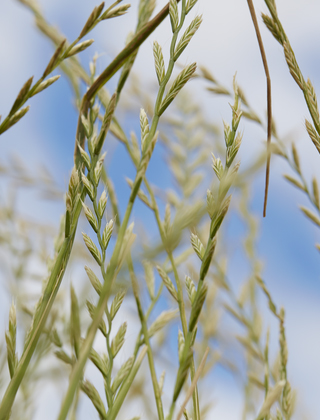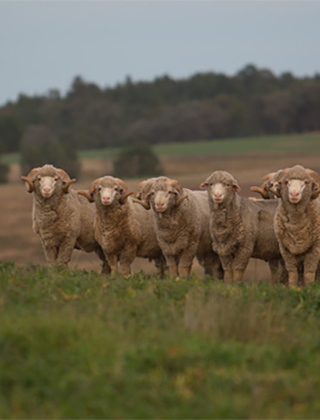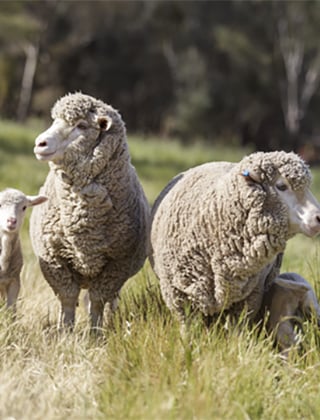Workshop to help you pick performer ewes
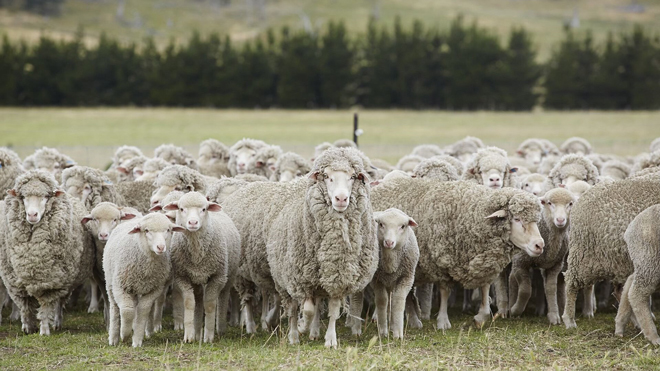
AWI has launched a new, one-day workshop aimed at helping woolgrowers lift the lifetime performance, productivity, and value of their Merino ewes. The Picking Performer Ewes workshop identifies the key practical actions that commercial enterprises can implement on-farm to improve the net reproductive rate in a Merino breeding flock.
AWI has developed the Picking Performer Ewes workshop to show woolgrowers running commercial self-replacing Merino enterprises how within-flock selection and enhanced management can increase reproductive rates in their breeding flocks, and lead to consistency of production and business performance – year-in, year-out.
“The top performing Merino ewe-based enterprises generate much higher profits than the industry average. There is enormous potential for the average woolgrower to raise their profits to the level of the top producers. The new Picking Performer Ewes workshop aims to help woolgrowers do this by identifying the ewes in their flock that are performing and those that aren’t,” said AWI National Extension Manager, Emily King.
“In flocks where little to no selection pressure has been placed on breeding ewes, there is scope to increase the overall net reproductive rate of the flock, decrease reproductive wastage, and increase the consistency of production, by simply picking the animals which are producing offspring consistently.
“The new workshop aims to help woolgrowers capitalise on finding and managing the performer ewes that earn you double what the passengers do in their lifetime. Performance varies between seasons, as well as districts, but high weaning rates are achievable in all areas, with astute management.”
Participants in the workshop step through sessions relating to the whole reproductive cycle, with a focus on:
- Understanding a ewe’s lifetime performance and economic earnings
- The difference between ewes that are ‘passengers’ and those that are ‘performers’, and the high cost of retaining passengers
- The importance of undertaking the three key performance practices of: scanning, condition scoring and wet & drying at marking
- Turning potential into profit by lambing and weaning well
- Learning strategies for success, and mapping it all out in a management calendar.
“The Picking Performer Ewes workshop demonstrates some critical management practices and strategies that commercial woolgrowers can apply to dial up the lifetime reproductive performance of their flock.”
Emily King, AWI National Extension Manager
The Picking Performer Ewes workshop was piloted in October and will be available across the country next year.
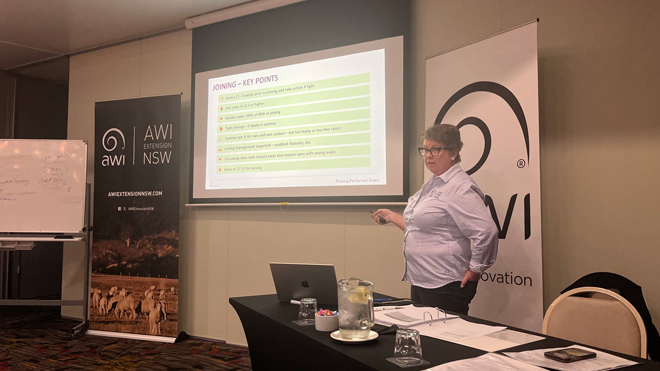
AWI Extension NSW Program Manager Megan Rogers conducting a pilot of the Picking Performer Ewes workshop in October.
In October, AWI Extension NSW held a 1¼ hour webinar that ran through some of the key points of the Picking Performer Ewes workshop, discussing some key must do's in flock management to improve ewes’ net reproduction rate. The webinar was recorded and is available to view on demand on the AWI Extension NSW website (details below).
The Picking Performer Ewes workshop complements the AWI-funded Lifetime Ewe Management (LTEM) course, and is ideal as an LTEM refresher but also for those who haven't completed an LTEM course yet.
More information:
- For more information on the Picking Performer Ewes workshop, visit www.wool.com/workshops
- If you’d like the workshop to be run in your region, contact your state AWI Extension Network and let them know. Contact details are available at www.wool.com/networks
- View a recording of the AWI Extension NSW webinar at www.awiextensionnsw.com/webinars
Passengers and performers – in brief
- Lifetime reproductive performance is a key profit driver in a sheep enterprise; therefore, it is important to identify which ewes are a ‘passenger’ and which are a ‘performer’.
- There is a huge financial difference between the ‘passengers’ (bottom 25%) and ‘performers’ (top 25%).
- Performers rear at least one lamb each year, succeeding at their first two attempts.
- Passengers fail to produce a lamb from their first two attempts – they learn and repeat poor maternal behaviour.
- Passengers are hard to detect visually as maidens and are best removed from the breeding flock after their second failed lambing attempt.
- Merino ewes reach their reproductive peak late in life, as 6–7-year-olds.
This article appeared in the December 2024 edition of AWI’s Beyond the Bale magazine. Reproduction of the article is encouraged.






